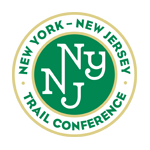Hydrilla verticillata (Hydrilla)
Hydrilla is a submerged aquatic perennial plant that can grow in depths of up to 30 feet. It has been nicknamed “the perfect aquatic weed” and “one of the world’s most invasive aquatic weeds.” Hydrilla gets these nicknames for its many adaptive qualities and multiple means of reproduction, allowing it to survive and thrive in many waters. Its adaptive qualities allow it to outcompete and displace native species, while choking waterways and causing both environmental and economic damage. There is a high potential for hydrilla to spread into other waterbodies in the region, which makes early detection surveys even more important.
Now found in our waters
Hydrilla was discovered in the Croton Bay (Croton-on-Hudson, NY) in August 2013 during a rare plant survey. In 2014 the Lower Hudson Partnership for Regional Invasive Species Management (PRISM) funded Allied Biological, Inc. to do a delineation survey of the entire Croton River to determine how far the plant has spread. Since then, multiple patches of hydrilla have been found in the New Croton Reservoir and throughout the Croton River. Allied Biological, Inc. was also funded to survey 40+ sites along the Hudson River both north and south of the Croton River. No rooted hydrilla plants have been found outside of the New Croton Reservoir or Croton River.
Learn to identify hydrilla
Hydrilla has a few key features that can help distinguish it from its native lookalike, elodea:
Hydrilla
|
Elodea
|
Brazilian Elodea
|
How does hydrilla spread?
- Fragmentation
- Tubers
- Turions
- Aquarium trade
- Hitchhiking on boats
- Dredging spoils
Ecological and economic impacts of hydrilla
Ecological Impacts
|
Economic Impacts
|
What should I do if I find it?
Record the location of potential sightings with as much detail as possible (GPS coordinates when possible, or visual references to get us as close to the exact site as possible). Take a picture with as many parts of the plant as possible (tuber, turions, whorl of 5 leaves, serrated leaf margins). When possible, take a voucher specimen.
For more information, contact Clearwater's Invasive Species Program Coordinator at (845) 265-8080 x7114 or email at [email protected].
How can you help?
Always Clean-Drain-Dry your boat and any equipment that comes into contact with the water before entering a different body of water.
Become a Hydrilla Hunter! Contact Clearwater's Invasive Species Program Coordinator ([email protected], (845) 265-8080 x7114) to find out more information about getting involved in Volunteer Surveying.
Spread the word! Not everybody knows what invasive species are, or that there may be invasive hitchhikers on their boats. Educating boaters, fisherman, and everybody else who uses the water recreationally is the first step to preventing the spread of invasive species.
Find out what's being done in the Hudson Valley and Beyond!
Check out the Journal News article Hydrilla invades Hudson estuary written by Akiko Matsuda to learn more about the Croton River hydrilla infestation and early detection surveying being done throughout the Lower Hudson Valley.
Learn more about the Cayuga Inlet hydrilla infestation in Ithaca, NY, and what their Local Hydrilla Task Force is doing to manage it and prevent its spread.
Find out more about the Tonawanda Creek/Erie Canal hydrilla infestation, and how the US Army Corps of Engineers is leading the management project there.
Resources
- Clearwater's Hydrilla, Now Found in our Waters brochure
- Clearwater's Avian Vacuolar Myelinopathy pamphlet
- NYSDEC's "Hydrilla Fact Sheet" brochure

